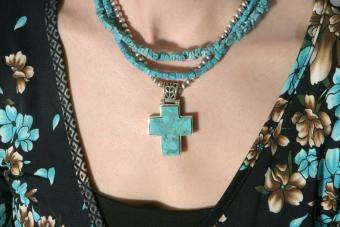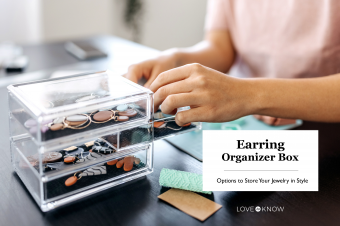
Akoya pearls are the most popular pearls globally, the third most valuable (only South Sea pearls and Tahitian pearls are more valuable), and the type most people have in mind when they think of pearls. Akoya pearls were also the first to be cultured, the process in which a bead is inserted inside an oyster, and the pearl is grown on this surface. The Akoya pearl is a stunning and fascinating jewelry element, and it's easy to see why people worldwide covet them.
Where Akoya Pearls Originated
The ever-stunning and ever-popular Akoya pearl come from the Akoya oysters, which can be found in the seawaters off of Japan, Vietnam, and China. Japan is the overwhelming leader in Akoya pearl cultivation, and the country prides itself on producing the most consistently beautiful pearls in the entire world.
Harvesting Akoya pearls is painstaking work. It takes roughly 10-18 months for the pearl to reach a size where it can be cultivated. During those 10 to 18 months, pearl farmers carefully monitor the conditions in which the oysters exist. They assess food, water, and nutrients to ensure that each oyster produces the most perfect Akoya pearl.
What Makes Them So Special
At first glance, an Akoya pearl looks like many other variations of pearl, but it is, in fact, rare and quite special. Compared to the other four types of known pearls, the Akoya sets itself apart with its jaw-dropping luster and surface. The Akoya reigns supreme in both aspects, beating out all other variations of pearls in shine, round perfection, and smooth, creamy surface quality.
These pearls are a step up from many others in regard to size. They can range from 2.0-3.0mm up to 9.0-9.5mm and are larger than most other pearls. Their large, round, shiny appeal makes them the perfect pearl for anyone dreaming of dripping in pearls.
Fascinating Pearl Facts
The Akoya oyster and its pearls are fascinating elements of nature, and these fun facts prove it.
- Akoya oysters only produce one pearl per year.
- The survival rates of the Akoya oyster are low, with only half of the oysters surviving the farming process.
- Once opened, the oysters have no more use at the oyster farm.
- Pearls are the only gemstone that comes from a living thing.
- The most expensive pearl is estimated to be worth $100 million.
Akoya Pearl Qualities
Aside from standout smoothness, luster, and roundness, the Akoya pearl has some other identifying features that put it in a pearl-world all its own.
Colors Fit for a Queen
Most saltwater pearls come in a wide array of amazing colors, but the Akoya pearl hovers in one hue. This pearl is most commonly found in a bright white color but can also come in pastel hues of cream, rose, silver, and gold.
Quality and Grades
Pearls are graded according to luster, nacre thickness, roundness, and the presence or absence of surface flaws.
- Luster describes the shininess of the pearl's surface. A pearl with good luster reflects things on its surface, while one with poor luster has a dull or even chalky surface.
- Nacre is the coating that the oyster creates on the surface of the pearl. The thicker the nacre, the longer the pearl has been in the oyster, and the longer it will remain lustrous.
- The rounder the pearl, the higher its value will be. The only exception is for baroque (irregular) pearls that form in unusually striking or attractive shapes.
- The pearl's surface should be regular, without blisters, bumps, or pits.
- The larger the pearl, the more valuable it will be.
There is no single international standard for pearl grading the way there is for diamonds, so, unfortunately, a strand that one dealer grades as AAA may be graded by another as just A. (Of course, there's latitude even within diamond grading, but the discrepancies are considerably smaller.)
Akoya pearls are graded on the AAA to A scale.
- An AAA pearl is the highest grade, with a regular surface and high luster. The surface should be virtually flawless.
- An AA pearl is the next grade. The surface should be between 75 and 95 percent free of blemishes, and the luster should be clear.
- The lowest grade is an A. This pearl's surface is more than one-fourth flawed, and the luster is lower than the other two grades.
Hanadama pearls are the finest of Akoya pearls. The term literally translates to "round flower," a poetic term that conveys their beauty. Only Japanese labs can award the hanadama designation, so not all pearls are graded for this, but the ones that have been certified hanadama have virtually flawless surfaces, thick nacre, and exceptional luster.
Wearing Akoya Pearls
Akoya pearls are perfect for classic pearl necklaces or pearl stud earrings. There's no reason, though, to limit yourself to those. You can add color to a strand of Akoya pearls by using a necklace enhancer, or you can have them strung with colored gemstones. Faceted stones make a lively contrast with pearls' softer colors and can pick up the color in the pearls' overtones.

Taking Care of Akoya Pearls
Pearls are delicate compared to other gems and stones, and due to their softness and the fact that the nacre is deposited in layers, they need special care. Don't let them get dry, and never store them in a bank safe deposit box or near heat. This can dull the surface of the finest pearls and can even make the nacre flake off.
Don't let Akoya pearls come in contact with cosmetics, perfume, or hair sprays. Put them on last when you're dressing and, if possible, 30 minutes after using any beauty products. To keep them clean, wipe them with a damp cloth. Don't rinse them unless absolutely necessary, as the water can weaken the silk on which they are strung.
Have your Akoya pearls restrung about every 18 months, or a year if you wear them frequently. To keep pearls from rubbing against one another or to keep them all from falling off if the strand breaks, there should be knots between every pearl on a necklace.
Classic and Timeless Beauty
There are few jewels, stones, or jewelry elements as timeless and classic as the pearl. They elevate any look, add a touch of refinement and elegance to just about any style. Pearls are one piece of jewelry that will probably never go out of style, and because of this, they are a wonderful investment for any woman. No one looks back on a strand of pearls and thinks to themselves: what a waste those were!







